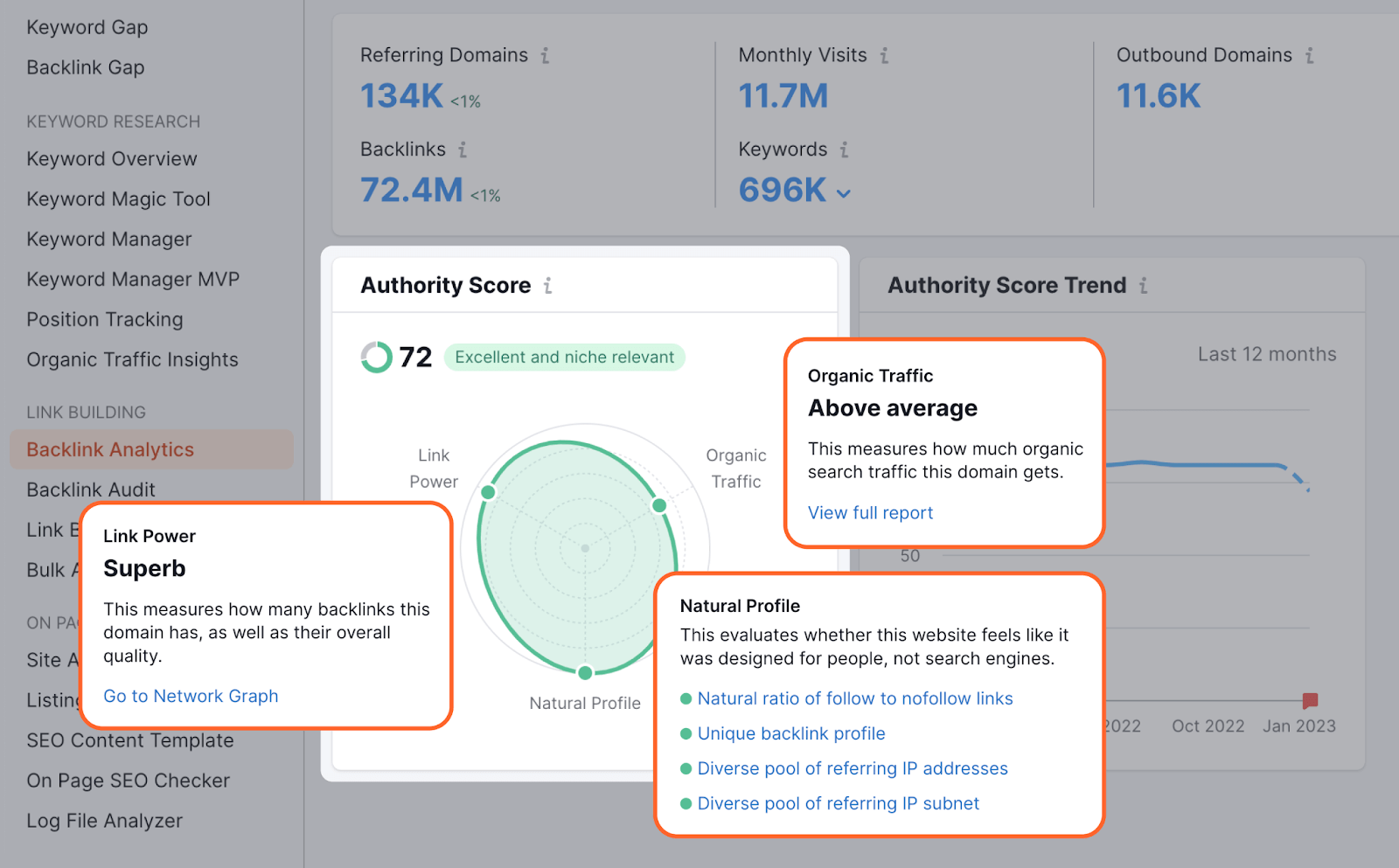When it comes to building links for a website, it’s common to encounter metrics such as Domain Authority (DA), Domain Rating (DR), and Authority Score (AS) from various SEO tools. Grasping these concepts is vital for anyone aiming to enhance their website’s online presence and search engine rankings. We’ll explore the distinctions between DA, DR, and AS, particularly their connections to backlinks, a pivotal element of SEO.
Domain Authority (DA) – A Moz Metric
Moz, a notable figure in the SEO field, devised Domain Authority as a measure to forecast a website’s performance in search engine results pages (SERPs). The DA score, which ranges from 1 to 100, indicates the likelihood of a site’s ranking success, with higher scores suggesting better odds.
Calculating DA
DA is derived by amalgamating various elements, such as the number of linking root domains and total links, into a composite DA score. This metric is useful for comparing the competitive strength of different websites or monitoring a site’s ranking capability over time.
The Role of Backlinks in DA
Backlinks play a critical role in shaping a website’s DA. Moz’s algorithm assesses not only the sheer number of backlinks but also their quality. Premium backlinks, especially those originating from high-DA sites, are instrumental in elevating a website’s own DA.
Domain Rating (DR) – A Metric by Ahrefs
Ahrefs, another SEO heavyweight, introduced Domain Rating as a gauge of a site’s backlink profile strength in relation to its database. DR is scored on a 0 to 100 scale.
DR Calculation Method
DR considers the quality and quantity of a site’s backlinks. It differs from DA by focusing more on backlink quality. The metric evaluates the number of unique domains linking to a site and the DR scores of these linking domains.
DR’s Connection to Backlinks
A lofty DR score signifies a robust and high-quality backlink profile. Ahrefs notes that securing backlinks from sites with a high DR can significantly boost a site’s own DR.
Authority Score (AS) – SEMrush’s Composite Metric
SEMrush’s Authority Score evaluates a website’s overall quality. The AS, like DA and DR, is measured on a 1 to 100 scale, with higher numbers indicating greater website influence.
The Computation of AS
AS takes into account several backlink metrics, including domain score and trust score, to evaluate the caliber of a site’s backlinks. It also factors in website traffic and user numbers.
Influence of Backlinks on AS
AS heavily depends on both the quality and quantity of backlinks. An increased count of high-quality backlinks from authoritative sites enhances the AS. SEMrush’s algorithm also accounts for backlink toxicity, penalizing links from low-quality or irrelevant sources.
Distinguishing Between DA, DR & AS
While DA, DR, and AS might appear similar at first glance, they vary in their methodologies and specific considerations:
- Method of Calculation: DA is more concerned with the overall size of a site’s link profile, while DR emphasizes backlink quality, and AS integrates backlink data with user behavior and traffic metrics.
- Data Sources: Each metric utilizes unique data sets, with Moz, Ahrefs, and SEMrush each drawing on their proprietary information.
- Quality vs. Quantity Focus: DR prioritizes backlink quality; DA balances both aspects; AS encompasses a broader scope, including backlink profile, user experience, and traffic.
- Intended Usage: DA predicts ranking potential, DR assesses backlink profile strength, and AS offers a more comprehensive view of a site’s authority and quality.
Does It Really Matter?
DA, DR, and AS are indispensable tools for SEO professionals because they provide a way to estimate the likelihood of a website’s ranking. Comprehending their nuances and their interplay with backlinks is crucial for crafting an effective link building strategy. Each metric sheds light on different facets of a website’s authority and ranking prospects. Working in tandem, they provide a holistic picture of a site’s SEO health. Enhancing these metrics involves a long-term commitment to producing quality content, engaging in ethical link-building, and consistently optimizing your site to cater to both user experience and search engine criteria.
However, these metrics are only coming from SEO tools. It’s entirely possible for a website to be ranking well with a very low DA, DR or AS. They’re a great indication of a site’s potential in Google, but they are not the actual Google algorithm. Use them to your advantage when possible.

